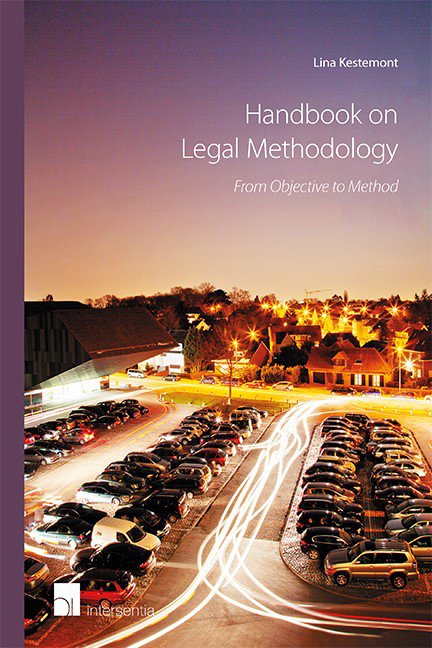Book contents
3 - Research objectives and their methodological features
Published online by Cambridge University Press: 22 February 2022
Summary
In part 3 of this handbook we continue by discussing the methodological features of each type of research objective.
METHODOLOGICAL FEATURES OF A DESCRIPTIVE RESEARCH OBJECTIVE
A descriptive research objective will systematically analyze legal constructs in all their components in order to present them in an accurate, significant and orderly manner. In this section we shed light on the angle and the structure of a description, we clarify nine different types of interpretation and we explain that in the process of interpreting legal rules sometimes normative choices have to be made.
DESCRIPTION ANGLE
As law is mainly laid down in legal texts; the interpretation of these texts is important when describing the law. It involves “the attribution of a meaning to a document, or to a set of documents, which is (are) regarded as expressing a legal norm.” Every interpretation departs from a particular perspective: the background of a regulation, the structure of a legal system, the purpose of legal rule, etc. Also the sources used for interpretation are of importance. After all, an interpretation on the basis of current case law can be different from an interpretation on the basis of parliamentary preparatory works. Legal scholars therefore always have to clarify which sources were used to interpret a legal construct.
A descriptive research objective is often a preliminary step, to the benefit of the other objectives of the research, such as classifications, comparisons, evaluations etc. Those other research goals will influence the interpretation of legal rules and judgments. After all, they determine to a large extent the description angle: is an old regulation being described in order to compare it with its renewed counterpart, or in order to analyze whether its scope of application could also cover a new social phenomenon? Moreover, the extent to which a researcher takes into account non-applicable law, such as old legislation or rejected bills, also depends on the description's purpose for the other research goals.
DESCRIPTION STRUCTURE
Legal scholars can divide their description into different parts or can structure it according to themes. For example, a description of legislation on medical check-ups in case of invalidity can be divided/structured according to the type of invalidity: industrial accidents, occupational diseases, pregnancy, etc.
- Type
- Chapter
- Information
- Handbook on Legal MethodologyFrom Objective to Method, pp. 19 - 74Publisher: IntersentiaPrint publication year: 2018



